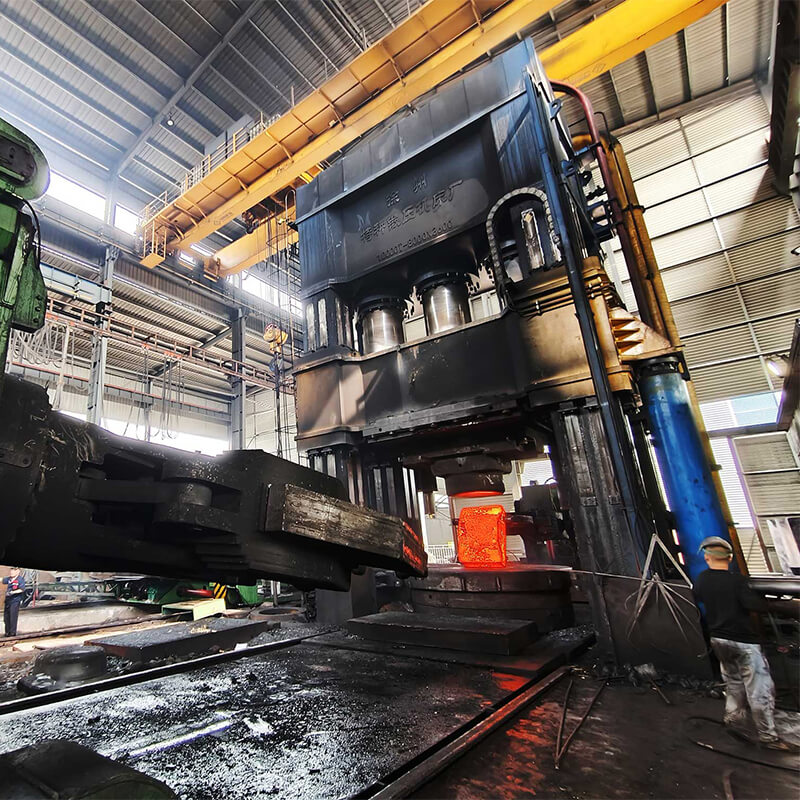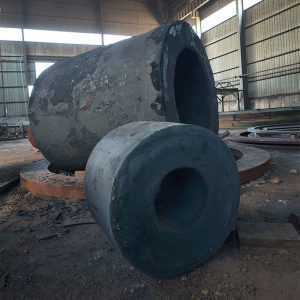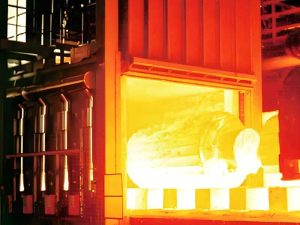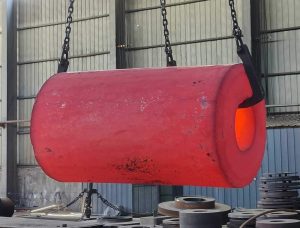The die movement and degrees of freedom of the forging equipment are inconsistent, according to the characteristics of the lower dead center deformation limitation, the forging equipment can be divided into the following four forms:
Restriction of forging force form: Hydraulic presses that directly drive the slide.
Quasi-stroke limiting method: Hydraulic presses with hydraulic drive crank linkage mechanism.
Stroke limiting method: Mechanical presses with crank, linkage and wedge mechanism driving the slide.
Energy limiting method: Screw and friction presses utilizing a screw mechanism.
In order to obtain high accuracy care should be taken to prevent overloading at the lower dead center and to control speed and die position. Because these will have an impact on the forging tolerance, shape accuracy and die life. In addition, in order to maintain accuracy, attention should also be paid to adjusting the slider guide clearance, to ensure the rigidity, adjust the lower dead center and the use of subsidized transmission and other measures.
There is also a difference between vertical and horizontal movement of the slide (for the forging of long and thin parts, lubrication and cooling, and high-speed production of parts forging), the use of compensation devices can be added to other directions of movement. The different ways mentioned above, the required forging force, process, material utilization, yield, dimensional tolerances and lubrication and cooling methods are different, these factors are also factors affecting the level of automation.
3. Forging materials
The materials used for forging are mainly carbon and alloy steels of various compositions, followed by aluminum, magnesium, copper, titanium, etc. and their alloys. The raw state of the material is bar, ingot, metal powder and liquid metal. The ratio of the cross sectional area of the metal before deformation to the cross sectional area after deformation is called forging ratio. Correct selection of forging ratio, reasonable heating temperature and holding time, reasonable starting and final forging temperature, reasonable amount of deformation and deformation speed to improve product quality and reduce costs have a great relationship.
General small and medium-sized forgings are used round or square bars as blanks. Bar grain organization and mechanical properties are uniform, good, accurate shape and size, good surface quality, easy to organize mass production. As long as the heating temperature and deformation conditions are reasonably controlled, no need for large forging deformation can be forged with excellent performance forgings.
Ingots are used only for large forgings. Ingot is cast state organization, there are large columnar crystals and loose center. Therefore, it must be through the large plastic deformation, the columnar crystals broken into fine grains, the loose compaction, in order to obtain excellent metal organization and mechanical properties.
After pressing and sintering into the powder metallurgy preforms, in the hot state by no fly edge die forging can be made into powder forgings. Powder forgings are close to the density of general die forgings, have good mechanical properties, and high precision, can reduce the subsequent cutting process. Powder forgings internal organization uniformity, no segregation, can be used to manufacture small gears and other workpieces. However, the price of powder is much higher than the price of general bar, the application in the production of certain restrictions.
The liquid metal poured in the die chamber to apply static pressure, so that it is solidified under pressure, crystallization, flow, plastic deformation and molding, you can get the required shape and properties of the drop-forged parts. Liquid metal die forging is between die casting and die forging forming method, especially for general die forging difficult to form complex thin-walled parts.
Forging materials in addition to the usual materials, such as a variety of components of carbon steel and alloy steel, followed by aluminum, magnesium, copper, titanium and other alloys, in addition to iron-based high-temperature alloys, nickel-based high-temperature alloys, cobalt-based high-temperature alloys deformation alloys are also used in the forging or rolling way to complete the process, but these alloys due to its relatively narrow plasticity zone, so forging difficulty will be relatively large, the different materials, heating temperature, the opening forging temperature and the end of the forging temperature There are strict requirements.
4、Process flow
Different forging methods have different processes, including hot die forging process is the longest, the general order of: forging billet material; forging billet heating; roll forging billet preparation; die forging forming; cutting; punching; straightening; intermediate inspection, inspection of forging dimensions and surface defects; heat treatment of forgings to eliminate forging stress, improve the cutting performance of the metal; clean up, mainly to remove the surface of the oxidized skin; straightening; checking, the general forgings to be After the appearance and hardness inspection, the important forgings should also be analyzed by chemical composition, mechanical properties, residual stress and other tests and non-destructive testing.
5. Characteristics of forgings
Compared with the casting, the metal after forging process can improve its organizational structure and mechanical properties. Casting organization after forging method of heat processing deformation due to the deformation and recrystallization of the metal, so that the original coarse dendritic and columnar grains into finer grains, uniform size of the equiaxial recrystallization of the organization, so that the ingot within the original segregation, porosity, porosity, slag and other compaction and welded together, the organization has become more compact, and improve the plasticity of the metal and mechanical properties.
The mechanical properties of castings are lower than the mechanical properties of forgings of the same material. In addition, the forging process can ensure the continuity of the metal fiber organization, so that the fiber organization of the forging and forging shape to maintain consistency, metal flow line integrity, can ensure that the parts have good mechanical properties and long service life using precision die forging, cold extrusion, temperature extrusion and other processes produced by the forging, are castings can not be compared.
A forging is an object in which the metal is pressurized to shape the required shape or suitable compression force through plastic deformation. This force is typically achieved through the use of a hammer or pressure. The forging process builds delicate granular structures and improves the physical properties of the metal. In the real-life use of parts, a proper design enables the flow of particles in the direction of the main pressure. Castings are metal molding objects obtained by various casting methods, i.e., the smelted liquid metal is injected into a pre-prepared casting mold by pouring, pressure injection, inhalation or other casting methods, and then cooled down, cleaned and post-treated by sand dropping, and so on, and then the object with a certain shape, size, and performance is obtained.
 Shanxi Huan Guan Heavy Industry Large Flange Manufacturer
Shanxi Huan Guan Heavy Industry Large Flange Manufacturer







Hello!sign in